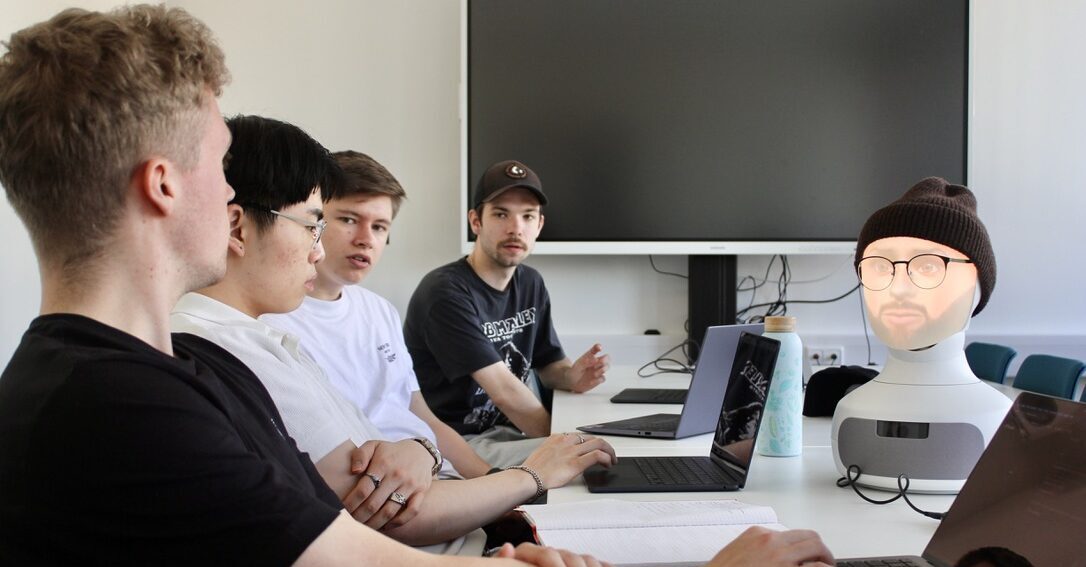Robots are already standard in other countries healthcare and could soon become part of the solution for our strained healthcare systems, too. This rapid development opens up exciting research opportunities: How do people in Germany and Denmark want to communicate with robots? What reactions do they show when interacting with a human-like conversation partner?
Furhat was developed to scientifically explore these questions. This social-interactive robot uses facial projection to create highly realistic expressions, offering fascinating possibilities for research in human-robot interaction. Students at Kiel University of Applied Sciences have already put the robot through its first test run.

Robots are increasingly becoming part of our everyday lives. But society responds to this in different ways. Furhat gives us a unique opportunity to study the interaction between humans and robots at the intersection of technology, design, and communication.
Prof. Dr. Franziska Uhing
Professor of Interactive Media at Kiel University of Applied Sciences
Innovative projection technology for natural interactions
Unlike traditional robots, Furhat doesn’t have a mechanical face. Instead, it uses projection technology to display realistic facial expressions on a semi-transparent mask. This makes its expressions appear particularly natural and highly adaptable.
Voices and facial appearances, response behavior, and even micro-reactions – such as a wink, smile, or head turn – can be fully automated or manually controlled through graphical user interfaces and programming environments. This opens up new possibilities for targeted research into specific aspects of communication.
In addition to a controlled dialog system, Furhat is also compatible with large language models, enabling AI-powered, spontaneous conversations. Thanks to its omnidirectional microphone, it can even engage with multiple people at once.
Furhat’s potential applications are therefore wide-ranging and extend to many scenarios in hospital environments.
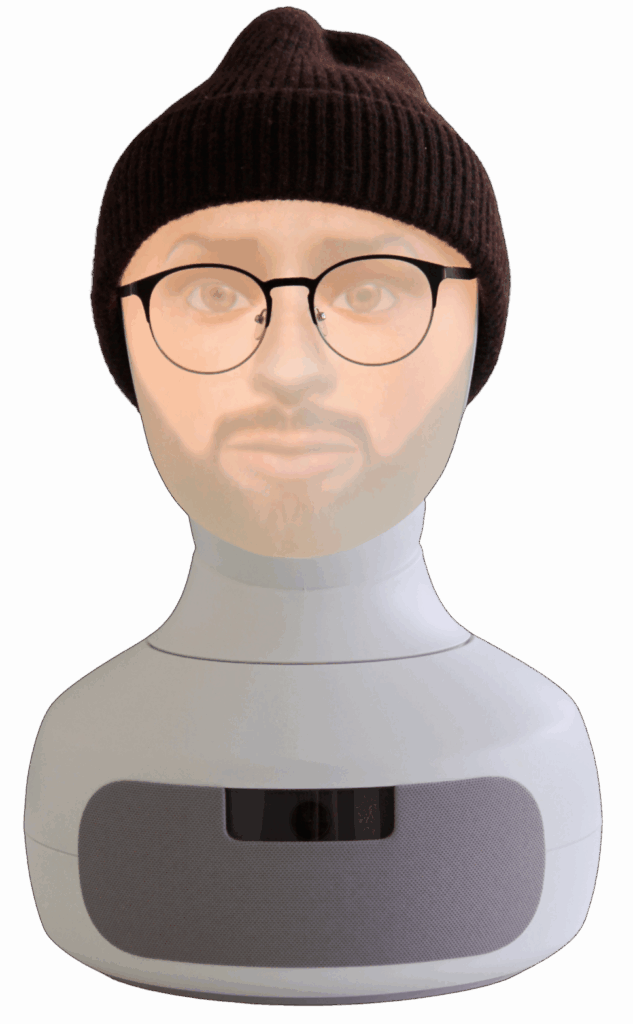
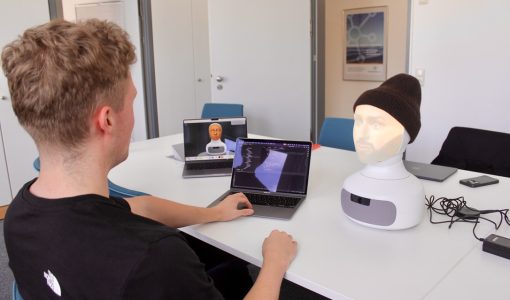
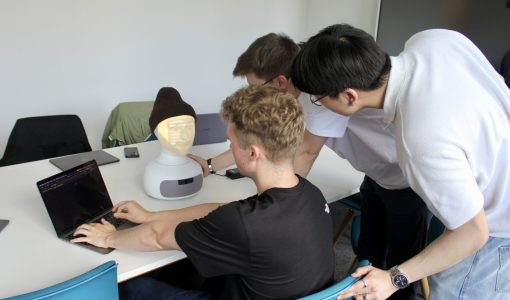
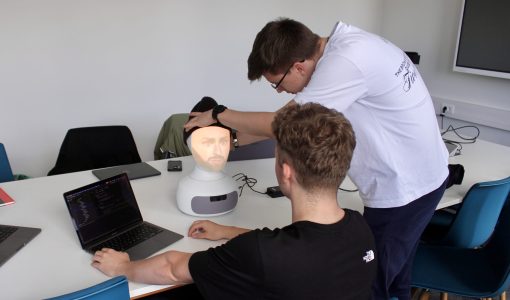
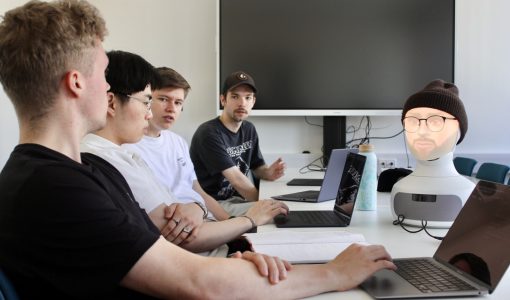
First test at Kiel University of Applied Sciences
As budding media engineers, Malou Clausen, Finn Jensen, Jonas Alexander Rauchardt, Levin Labahn and Darren Yeo are already conducting research with Furhat as part of their studies at Kiel University of Applied Sciences. They want to find out which application scenarios the interactive robot is suitable for. For an initial test under real conditions, they placed Furhat at the entrance to the university canteen on the Kiel University of Applied Sciences campus. There, it was to provide information about the menu to students and lecturers looking for food.
“We are investigating how reliably the robot works in the lively university environment: whether it can follow conversations well even in noisy surroundings, how it is affected by the many people in the background and whether it can interact with several users in succession” reveals Malou Clausen when testing Furhat.
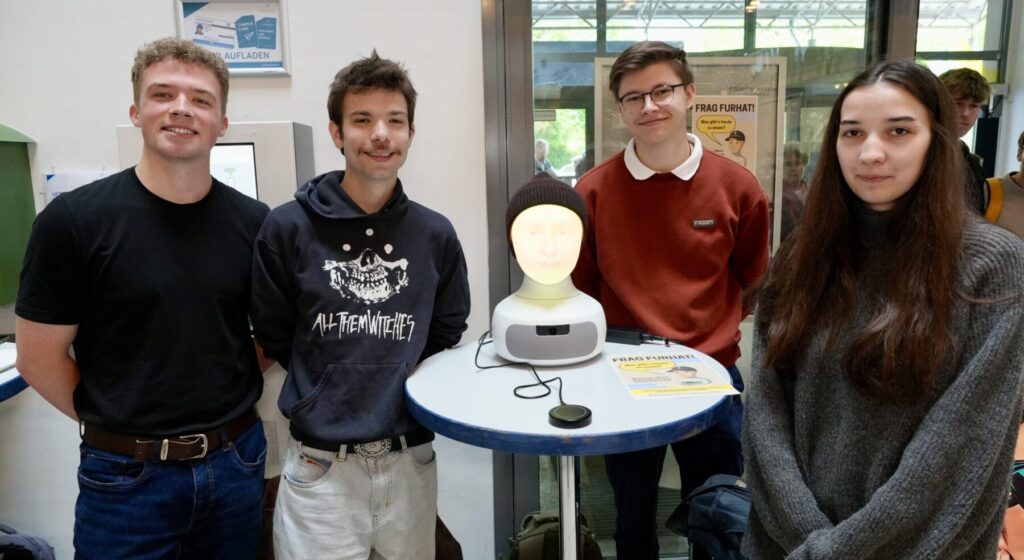
The students configured the robot’s face and voice in advance, implemented a language model and challenged it in the pre-test. Nevertheless, unforeseen difficulties arose: “The camera causes us problems. If users move sideways or step too close, the dialog breaks off. However, this is partly due to the slow internet connection. On the other hand, the microphone is impressive, working reliably and clearly even in noisy environments,” reports Levin Labahn.
However, the perhaps most exciting result did not come from technology, but from the canteen visitors: Despite their great curiosity, many preferred to look at the menu on the notice board as usual instead of interacting with the robot. This was an important indication for the research team: the mere presence of a humanoid robot is not enough to encourage interaction – use cases are needed in which communication with the robot offers real added value. In future tests, users should receive information from the robot that they cannot obtain more easily from other sources. Furhat is also being planned for use in hospitals to interact with patients suffering from dementia.
One thing is clear: the Furhat robot is not a ready-made solution, but an exciting research tool that supports HospiBot on its way to gaining new insights into communication between humans and machines.
About the author

Wiebke Behrens-Focken
Hi! Im part of HospiBot’s external communications team. My aim is to make the complex work behind our research project understandable and accessible to a broader audience. That way I can raise awareness of intelligent technologies like robots, foster trust in their use, and encourage public dialogue about their role in healthcare and society.

